Wednesday 16 July 2008
The Common Agricultural Policy: sorting the facts from the fiction
20/06/2008 Press release
The Common Agricultural Policy (CAP) is one of the key European Union policies and one of the building blocks on which the EU was built. Much has been said and written about the CAP over the years, some of it true and some of it false. The CAP has been accused of many things and been made the scapegoat for many ills.
The following text responds to some of the popular misconceptions about the CAP.
The Common Agricultural Policy (CAP) is one of the key European Union policies and one of the building blocks on which the EU was built. Much has been said and written about the CAP over the years, some of it true and some of it false. The CAP has been accused of many things and been made the scapegoat for many ills.
Love it or loathe it, the CAP has played a major role in maintaining a vibrant farming sector across the EU, preserving Europe's unique rural heritage, protecting the environment and animal welfare, providing plentiful supplies of food on Europe's plates and bolstering a multi-billion euro agri-food industry.
The popular caricature of the CAP often represents the policy as it was in the 1970s and 1980s and bears no relation at all to the CAP of today. Over the last decade and a half, the CAP has been widely reformed, firstly in 1992, then in 1999 and then in a series of reforms beginning in 2003.
This has completely transformed the CAP into a modern policy, where farmers are more competitive and are free to respond to market signals, where the incentive to overproduce has disappeared, where farm support is contingent on the respect of tough environmental, animal welfare and food quality standards and where coherence with policies for development and trade has greatly increased.
The following document responds to some of the popular misconceptions about the CAP.
The CAP is too expensive
Some people say it is wrong to spend more than 40 percent of the EU budget on a sector that accounts for just 1.6 percent of GDP and employs only 5 percent of the working population.
This is simplistic and misleading.
The CAP is the only policy funded totally from the EU budget.
European spending replaces national spending. That is why it accounts for such a large proportion of the EU budget. Other policies cost much more, but are paid for out of national treasuries.
Ten years ago, 0.61 percent of the EU’s GDP went to our farmers. That figure currently stands at 0.43 percent, and in another ten years, it will be down to around 0.33 percent.
If we take into account all public budgets, the CAP is about 1 percent of public spending in the EU.
If there were no CAP, individual Member States would still subsidise their farmers.
This could lead to subsidy competition, would require intensified management under state aid rules and could potentially result in higher overall spending.
The CAP encourages overproduction of unwanted commodities
This is a popular caricature of the CAP, which bears no relation to the reality of the CAP in 2008.
Reforms to the CAP began in 1992, and intensified with the reforms of 2003, which cut the link between subsidies and production.
Farmers can now become true entrepreneurs, produce what the market and consumers want, look for profitable new markets and exploit new niches.
They no longer have to “farm for subsidies”, producing food for which there is no market.
The days of "butter mountains" are gone. Surpluses are a thing of the past.
Farmers now receive an income support payment which is not linked to production. However, beneficiaries have to fulfil environmental, animal welfare and food quality standards.
If they don't, their payments are cut.
The new CAP is much more trade-friendly, as 90 percent of our direct payments are classed by the WTO as non-trade-distorting.
The CAP gives consumers a wide choice of high quality food.
The Health Check of the CAP, currently being debated in Council, is not about fundamental reform. It is about streamlining and improving the policy in the light of experience, freeing our farmers to respond to increasing demand and meeting new challenges like climate change.
This is a separate exercise to the mid-term review of the Financial Perspectives, which will look at spending priorities after 2013. But of course the two are linked.
We hope to point the way to the future with some of the improvements we make to the CAP.
The CAP encourages intensive farming and is bad for the environment
Absolutely not.
If we got rid of the CAP tomorrow, farmers in the most competitive areas would adapt by intensifying their production whereas in less competitive areas, farming would cease and with it the many environment and landscape-related features associated with land use.
The CAP in fact rewards extensive production systems.
Farm payments are no longer linked to production, but to the respect of so-called Cross Compliance rules, whereby the farmer has to guarantee strict environmental, animal welfare and food quality standards. If he does not, his aid is reduced.
We are not interested in industrialised farming for Europe. There is a place in our model for small, medium and large farms.
The increasing importance of Rural Development policy also highlights the way in which the CAP is positive for the environment. At least a quarter of Rural Development spending must go towards environmental projects, while other RD projects also enhance quality of life in rural regions or the economic viability of farming activities.
Most CAP money goes to people who don't even farm
Only persons carrying out an agricultural activity have access to the Single Payment Scheme. And only agricultural land may be used to activate payments. Where there is no agricultural production, the land must be maintained in good agricultural and environmental condition.
It is not possible to receive an EU farm subsidy for a golf course or a leisure club or a railway.
Under current rules, it is of course possible that golf courses, railway companies or other businesses may also own adjoining or nearby land which is used for farming. On this land, the subsidies could of course be paid as long as the conditions were met
But in the Health Check, we have proposed to give Member States the power if they so wish to withhold direct payments from recipients who are not real "farmers".
The CAP is to blame for the food crisis
No. In fact, it can be part of the solution to ease the global pressure on food prices.
On 20th May, the European Commission unveiled its Health Check of the CAP. We intend to build further on our successive reforms, taking into account the challenges of an EU of 27 Member States. For close to two decades, CAP reforms have increased market orientation. With 'decoupling' of direct payments, the link between support and production has been broken. Farmers can respond to market signals and increase production as a reaction to higher prices. We also propose abolishing remaining constraints on production such as compulsory set-aside and milk quotas. During the process of reform, the coherence with policies for development and trade has greatly increased. The Health Check proposals pull further in this direction.
The 'neo-liberal' European Commission is dismantling the CAP
No. But the Commission is engaged in modernising, streamlining and simplifyin
g the CAP.
Through decoupled payments, we continue to give farmers a certain level of financial security. At the same time, we are liberating them to respond to market signals.
We have been adapting our market instruments (such as public intervention) to make them act like a real safety net without blocking normal market signals.
And through Rural Development policy, we have been helping farms to restructure, and have been caring for the environment and nurturing dynamic rural areas.
It is certainly not the time to abolish the CAP, as some have suggested. The market has a very important role to play, but left to itself, it will not care for our landscapes or respond to other public demands. And if we strip farming of all defences against occasional crises, we gamble with our food supply.
Instead, now is the time to push further ahead in the direction which we have already taken. We must clear away obstacles which are hindering farmers' responses to market signals. We must make our support systems more effective, efficient and simple – and more consistent with competitiveness. And we must help farms and other country businesses to meet various developing challenges, such as climate change.
We need to erect new barriers to imports to guarantee sufficient supplies and protect our farmers
Food security is of course extremely important. But we want to maintain healthy two-way trade. We are the world's biggest exporter and importer of agricultural products.
Our competitive advantage is in the provision of high-value processed foods.
We cannot compete with the likes of Brazil on bulk commodities and nor should we try.
Our overall aim is to do everything we can to strengthen the position of European farmers and food companies. But we have to look at our overall interests. We see huge opportunities to increase our exports of high quality foods to expanding markets such as China and India.
Therefore, it is not in our interests to become a fortress. If we erect new barriers, so will our trade partners. 'Community preference' can only be used in accordance with our international obligations. Protecting our farmers and ensuring community preference can also be done through income support, by giving farmers a basic safety net to allow them to take the decisions they have to take to compete on the market.
The EU is going to extend tobacco subsidies
The reform of the tobacco sector was agreed in 2004. This included full decoupling of support at the latest in 2010. This means that from 2010, specific tobacco subsidies will no longer exist. The reform is signed, sealed, set in stone. There is not and will not be a proposal to extend tobacco subsidies beyond 2010.
EU policies are causing milk farmers to tip away their milk while the developing world starves
Throwing milk away at a time when parts of the world are experiencing a food crisis is a rather paradoxical activity. However, it is a strong signal from the farmers that the margins of milk production are under pressure.
This development is however a normal development in the marketplace, like we have seen in recent months in the pig sector. Instead of battling with the processors, farmers should sit around the table with them in order to determine the appropriate level of production and the right price.
Instead many farmers are currently looking at their quota levels as production targets irrespective of the market. This is irrational from an economic point of view and milk-flooded fields are an irrational answer to that. Quota is an opportunity to produce and not an obligation.
We reacted last year to a demand by a huge majority of Member States to increase milk quotas because of the sharp increase in prices. The 2 percent increase has not yet fed through into the market.
It was already agreed in the 2003 reforms that milk quotas would expire in 2015. But we are aware of the need to give the sector a "soft landing" and that is why we are suggesting a gradual 5 percent increase in production between now and then.
We are also aware that some small producers and some producers in disadvantaged regions (like mountainous regions) are anxious about the future. That is why we have proposed in the Health Check measures to help them out. These include so-called Article 68, where member states can skim off up to 10 percent of direct aid and use some of the money to help the dairy sector. There are also possibilities within Rural Development policy.
But the future is without milk quotas. There is huge growth in demand for milk and dairy products in Europe and around the world, particularly in emerging markets. We must allow our own farmers to tap into this demand or other countries will take advantage instead.
The CAP is secretive. No-one knows who gets what money
We are fully committed to transparency of CAP recipients. This is taxpayers' money and they have the right to know where it goes. Full transparency will be compulsory from 2009. The publication will be done by the Member States. In the meantime, we have a link to the sites in the Member States which already publish these figures.
CAP export subsidies destroy farmers' livelihoods in developing countries
No they don't. It is true that, in the past, we used to overproduce commodities at high prices and then export them with the help of generous export subsidies.
But times have changed.
15 years ago, we spent €10 billion a year on export subsidies. In 2009, we are budgeting for a maximum of €350 million. The main destinations concerned by export subsidies are the Mediterranean Basin and the rest of Europe. Only a minimal proportion of subsidised goods find their way to Africa.
In any case, thanks to our reforms and recent developments in commodity markets, they are less and less needed as our prices are now aligned with world market prices.
There are no export refunds for cereals, rice, dairy products or fruit and vegetables. And we have pledged to phase out export subsidies entirely by 2013. They are yesterday's policy.
In November, we reintroduced export subsidies on exports of pig carcases, cuts and bellies.
It was a temporary solution to solve an acute market crisis in Europe. Of this, only 8,000 tonnes has gone to the whole of Africa. Contrary to recent claims, neither chicken nor tinned tomatoes are eligible for export subsidies for export to Africa.
The EU does nothing for poor countries
Under the “Everything But Arms” initiative, the 50 Least Developed Countries all have complete quota and tariff-free access to the EU market for all products except weapons. This advantage is now being extended to all ACP countries – 98 percent of goods from ACP countries enter the EU duty and quota free. The EU is the largest market for LDC agricultural exports. 176 developing countries benefit from EU preferences under the “General System of Preferences”, 15 of which benefit from GSP+. The EU provides more trade development assistance than the rest of the world put together. Every year since 2001, the EU has given about €750 million in trade development assistance. The EU takes 85 percent of Africa’s agricultural exports and 45 percent of those from Latin America. It imports more agricultural products from developing countries than the US, Australia, Japan, Canada and New Zealand put together.
The CAP is the reason the Doha Round has not succeeded so far
Far from it.
In the Doha Round, the EU has offered to phase out all export subsidies from 2013, cut trade-distorting domestic farm subsidies by 70 percent and reduce its average farm tariff by more than half. The highest tariffs would fall by at least 60 percent.
This offer allowed the agricultural chapter of the negotiations to progress well.
The problems are elsewhere, particularly in the failure thus far to find any sort of balance between what is on offer in agriculture and what is on offer on industrial tariffs.
The Commission wants to sacrifice the CAP to get a deal in the Doha Round
Of course we don't.
We have said clearly throughout the process that there will be no deal unless it is a balanced deal.
That means balanced within agriculture and balanced between agriculture and other parts of the negotiation, in particular industrial tariffs.
Even within agriculture, we need to see more engagement from our trading partners. For example, the US needs to be prepared to make significant cuts in its trade-distorting domestic subsidy system
http://europa.eu:80/rapid/pressReleasesAction.do?reference=MEMO/08/422&type=HTML&aged=0&language=EN&guiLanguage=en
Subscribe to:
Post Comments (Atom)







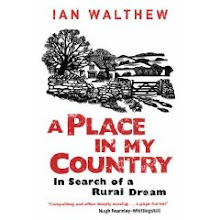


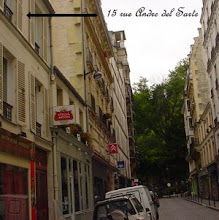
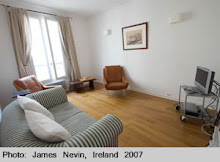

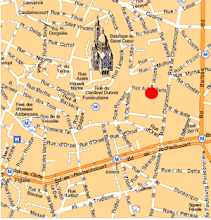
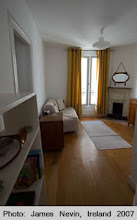
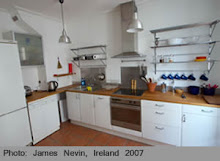
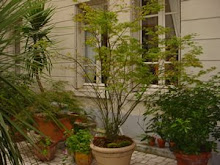
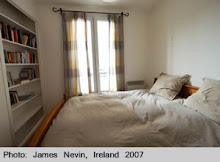



No comments:
Post a Comment